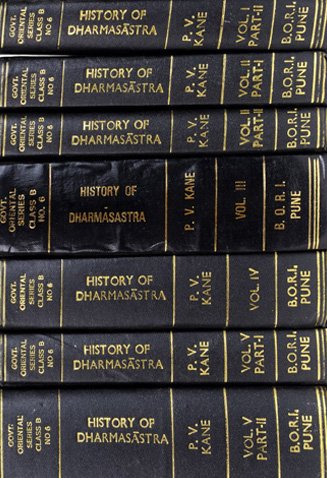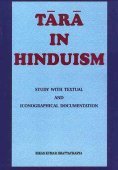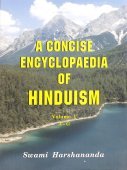Kapalika, Kāpālika, Kapālikā: 21 definitions
Introduction:
Kapalika means something in Hinduism, Sanskrit, the history of ancient India, Marathi, Hindi. If you want to know the exact meaning, history, etymology or English translation of this term then check out the descriptions on this page. Add your comment or reference to a book if you want to contribute to this summary article.
Alternative spellings of this word include Kapalik.
In Hinduism
Dharmashastra (religious law)
Source: Wisdom Library: Dharma-śāstraKāpālika (कापालिक) refers to “beggar”. The disguise of such a person is part of a five-fold group of spies (pañcavarga), according to Uśanas. The word is used throughout Dharmaśāstra literature such as the Manusmṛti. (also see the Manubhāṣya verse 7.154)

Dharmashastra (धर्मशास्त्र, dharmaśāstra) contains the instructions (shastra) regarding religious conduct of livelihood (dharma), ceremonies, jurisprudence (study of law) and more. It is categorized as smriti, an important and authoritative selection of books dealing with the Hindu lifestyle.
Purana and Itihasa (epic history)
Source: Cologne Digital Sanskrit Dictionaries: The Purana IndexKāpālika (कापालिक).—A heretical sect;1 their yoga.2

The Purana (पुराण, purāṇas) refers to Sanskrit literature preserving ancient India’s vast cultural history, including historical legends, religious ceremonies, various arts and sciences. The eighteen mahapuranas total over 400,000 shlokas (metrical couplets) and date to at least several centuries BCE.
Shaivism (Shaiva philosophy)
Source: academia.edu: KāpālikasKāpālika (कापालिक).—Kāpālikas carried a skull with them according to all accounts, thus imitating Bhairava the Brahman-slayer. According to orthodox prescriptions, a Brahman-slayer had to expiate for his sin by living outside society for 12 years, carrying a skull as an alms bowl and a skull-topped staff. Te earliest mention of Kāpālikas is found perhaps in Hāla’s Saṭṭasaī, datable to the 3rd to 5th centuries CE but most of our sources on them come from the 7th to the 12th centuries CE.
Two religious meanings of Kāpālika: First, in a stricter sense, it denotes a particular Śaiva ascetic order, closely related to the Lākulas and the Pāśupatas. Second, in a wider meaning, it refers to a (usually Śākta) tantric practitioner who adopts the observance and possibly other practices of the original Kāpālikas.
From the Mattavilāsaprahasana we learn that Kāpālikas were to discard or distribute their possessions (saṃvibhāga), in the manner of other ascetic orders. They wore a loincloth (kaupīna) to cover themselves and kept only their bhairavic attributes, which included the skull-bowl and perhaps a snakeskin (ahicamma, representing one of Śiva’s attributes, the snake) for the Brahmanical thread (see yajñopavīta). Unlike other ascetic currents, Kāpālikas seem to have allowed women to receive full initiation.
Source: Brill: Śaivism and the Tantric TraditionsKāpālika (कापालिक) or “skull-bearers” formed the third group of the Atimārga, alongside the Pāśupatas and the Lākulas.—The Kāpālikas were perhaps the most notorious Śaiva ascetics of classical India. They were known for their cremation ground rituals and for wandering around with a skull for an alms bowl. The skull (kapāla), their most conspicuous attribute, also provided their name. But the Kāpālikas are also designated as Somasiddhāntins, “Those of the Soma Doctrine”, or the “Soma People with the Skull”.
According to the Junwani copper plate inscription, the Kāpālikas belong to the spiritual lineage starting with Soma, and their initiation names therefore seem to be derived from the founder’s name. The name Soma can naturally be understood as a short form of Somaśarman. Thus, Kāpālikas are the Soma people because they follow the tradition started by Somaśarman.

Shaiva (शैव, śaiva) or Shaivism (śaivism) represents a tradition of Hinduism worshiping Shiva as the supreme being. Closely related to Shaktism, Shaiva literature includes a range of scriptures, including Tantras, while the root of this tradition may be traced back to the ancient Vedas.
Yoga (school of philosophy)
Source: ORA: Amanaska (king of all yogas): A Critical Edition and Annotated Translation by Jason BirchKāpālika (कापालिक) refers to a “Skull-Bearer”, according to the Dattātreyayogaśāstra 41-42.—Accordingly, “Whether a Brahmin, an ascetic, a Buddhist, a Jain, a Skull-Bearer (Kāpālika) or a materialist, the wise man who is endowed with faith and constantly devoted to the practice of [haṭha] yoga will attain complete success”.

Yoga is originally considered a branch of Hindu philosophy (astika), but both ancient and modern Yoga combine the physical, mental and spiritual. Yoga teaches various physical techniques also known as āsanas (postures), used for various purposes (eg., meditation, contemplation, relaxation).
India history and geography
Source: DSpace at Pondicherry: Siddha Cult in Tamilnadu (historical)Kāpālika (कापालिक).—The Kāpālas or Kāpālikas appear to have been closely related to the Somas, Saumas or Somasiddhāntins. This class of sectarian Śaiva faith seems to have originated very early on the religious stage of Ancient Indian History.
The Kāpālikas seem to have originated in south India, and Śrisailam happens to be their main center of activity. The aim of the Kāpālikas was not simply achieving divine bliss but attaining the magical yogic powers (Aṣta-siddhis), which were the most sought after in the traditional yogic practices which aim at the attainment of Siddhadeha and ultimately Divyadeha.
Source: Cologne Digital Sanskrit Dictionaries: Indian Epigraphical GlossaryKāpālikā.—(EI 3), a cloud [of dust]. Note: kāpālikā is defined in the “Indian epigraphical glossary” as it can be found on ancient inscriptions commonly written in Sanskrit, Prakrit or Dravidian languages.
Source: Singhi Jain Series: Ratnaprabha-suri’s Kuvalayamala-katha (history)Kāpālika (कापालिक) refers to one of the various tribes of ancient India, commonly depicted as engaging in Śabaravidyā cult practices and beliefs, as mentioned in the Kathās (narrative poems) such as Uddyotanasūri in his 8th-century Kuvalayamālā (a Prakrit Campū, similar to Kāvya poetry).—The special cult-practices and beliefs in Mantras amongst the tribes of Pulindas, Kāpālikas, Mātaṅgas, Rākṣasas, Vānaras on hill-tops and forests formed part of the Śabaravidyā. This was a cult involving occult practices like the muttering of śabaramantras and uttering the same through the ear (133.5). [...]

The history of India traces the identification of countries, villages, towns and other regions of India, as well as mythology, zoology, royal dynasties, rulers, tribes, local festivities and traditions and regional languages. Ancient India enjoyed religious freedom and encourages the path of Dharma, a concept common to Buddhism, Hinduism, and Jainism.
Languages of India and abroad
Marathi-English dictionary
Source: DDSA: The Molesworth Marathi and English Dictionarykāpālika (कापालिक).—a S Relating to kapāla the skull. 2 That worships Shiva after the vāmamārga order. He carries half a kapāla or skull as a drinking cup &c.
Marathi is an Indo-European language having over 70 million native speakers people in (predominantly) Maharashtra India. Marathi, like many other Indo-Aryan languages, evolved from early forms of Prakrit, which itself is a subset of Sanskrit, one of the most ancient languages of the world.
Sanskrit dictionary
Source: DDSA: The practical Sanskrit-English dictionaryKapālikā (कपालिका).—
1) A potsherd; मही घटत्वं घटतः कपालिका कपालिका चूर्णरजस्ततोणवः (mahī ghaṭatvaṃ ghaṭataḥ kapālikā kapālikā cūrṇarajastatoṇavaḥ) Subhāṣ. Manusmṛti 4.76,8.25.
2) The tartar of the teeth.
--- OR ---
Kāpālika (कापालिक).—a. [kapāla-aṇ-ṭhak-vā]
1) Relating to skulls; कङ्कालं मुसलं घोरं कापालमथ किङ्किणीम् (kaṅkālaṃ musalaṃ ghoraṃ kāpālamatha kiṅkiṇīm) Rām.1.27.12.
2) like a beggar; of a beggar कापाली नृप पापिष्ठां वृत्ति- मासाद्य जीवितः (kāpālī nṛpa pāpiṣṭhāṃ vṛtti- māsādya jīvitaḥ) Mahābhārata (Bombay) 12.8.7.
-laḥ, -likaḥ A follower of a certain Śaiva sect (the left-hand order) characterized by carrying skulls of men in the form of garlands and eating and drinking from them; भस्मा- स्थिशकलकीर्णा कापालमिव व्रतं धत्ते (bhasmā- sthiśakalakīrṇā kāpālamiva vrataṃ dhatte) Pañcatantra (Bombay) 1.212.
-lam A kind of leprosy.
-lī 1 A wreath of skulls; कापालीमुद्वहन्ती स्रजमिव धवलां कौमुदीम् (kāpālīmudvahantī srajamiva dhavalāṃ kaumudīm) Mu.3.2.
2) A clever woman.
3) The Embelia Ribes (Mar. vāvaḍiṃga).
See also (synonyms): kāpāla.
Source: Cologne Digital Sanskrit Dictionaries: Shabda-Sagara Sanskrit-English DictionaryKapālikā (कपालिका).—f.
(-kā) 1. The tartar of the teeth. 2. A potsherd. E. kapāla and kan aff.
--- OR ---
Kāpālika (कापालिक).—mfn.
(-kaḥ-kī-kaṃ) Relating or belonging to the skull. m.
(-kaḥ) A worshipper of Siva of the left-hand order, characterised by carrying a half of the skull as a cup, drinking spirituous liquors, &c. E. kapāla, and ṭhañ aff.
Source: Cologne Digital Sanskrit Dictionaries: Benfey Sanskrit-English DictionaryKapālika (कपालिक).—I. = kāpālika Ii. (q. cf.), [Pañcatantra] i. [distich] 239 (with shortened a on account of the metre?). Ii. f. kā, i. e. kapāla + ka, f. A potsherd, [Mānavadharmaśāstra] 4, 78.
--- OR ---
Kāpālika (कापालिक).—i. e. kapāla + ika, 1. m. A follower of a certain Śaiva sect, [Bhartṛhari, (ed. Bohlen.)] 1, 64. Ii. adj. Practised by a Kāpalika, [Prabodhacandrodaya, (ed. Brockhaus.)] 57, 12.
— Cf. kapālika 1.
Source: Cologne Digital Sanskrit Dictionaries: Cappeller Sanskrit-English DictionaryKāpālika (कापालिक).—[masculine] [plural] = [preceding] [masculine] [plural]; also a cert. mixed caste.
Source: Cologne Digital Sanskrit Dictionaries: Aufrecht Catalogus CatalogorumKāpālika (कापालिक) as mentioned in Aufrecht’s Catalogus Catalogorum:—poet. [Sūktikarṇāmṛta by Śrīdharadāsa]
Source: Cologne Digital Sanskrit Dictionaries: Monier-Williams Sanskrit-English Dictionary1) Kapālikā (कपालिका):—[from kapālaka > kapāla] f. a potsherd, [Mahābhārata; Manu-smṛti] etc.
2) [v.s. ...] the tartar of the teeth, [Suśruta i, 205, 9; ii, 128, 13.]
3) Kāpālika (कापालिक):—[from kāpāla] mf(ī)n. relating to or belonging to a skull (= kapālikeva) [gana] śarkarādi, [Pāṇini 5-3, 107]
4) [v.s. ...] m. a kind of Śaiva ascetic who carries a human skull and uses it as a receptacle for his food (he belongs to the left-hand sect), [Varāha-mihira’s Bṛhat-saṃhitā; Bhartṛhari i, 64; Prabodha-candrodaya liii, 5; Kathāsaritsāgara] etc.
5) [v.s. ...] Name of a mixed class (kapālin), [cf. Lexicographers, esp. such as amarasiṃha, halāyudha, hemacandra, etc.]
6) [v.s. ...] Name of a teacher
7) [v.s. ...] n. a kind of leprosy
8) [v.s. ...] mfn. peculiar to a Kāpālika, [Prabodha-candrodaya; Pañcatantra]
Source: Cologne Digital Sanskrit Dictionaries: Yates Sanskrit-English Dictionary1) Kapālikā (कपालिका):—(kā) 1. f. The tartar of the teeth; a potsherd.
2) Kāpālika (कापालिक):—[(kaḥ-kī-kaṃ) a.] Of the skull. m. A worshipper of Shiva, having half a skull for a cup.
Source: DDSA: Paia-sadda-mahannavo; a comprehensive Prakrit Hindi dictionary (S)Kāpālika (कापालिक) in the Sanskrit language is related to the Prakrit word: Kāvālia.
[Sanskrit to German]
Sanskrit, also spelled संस्कृतम् (saṃskṛtam), is an ancient language of India commonly seen as the grandmother of the Indo-European language family (even English!). Closely allied with Prakrit and Pali, Sanskrit is more exhaustive in both grammar and terms and has the most extensive collection of literature in the world, greatly surpassing its sister-languages Greek and Latin.
Hindi dictionary
Source: DDSA: A practical Hindi-English dictionaryKāpālika (कापालिक) [Also spelled kapalik]:—(nm) a follower of the vam-margi: shaiv sect, who carries human skull (kapal) in his hand, eats meat and drinks all sorts of intoxicants.
...
Kannada-English dictionary
Source: Alar: Kannada-English corpusKāpālika (ಕಾಪಾಲಿಕ):—
1) [noun] a south Indian sect of strong followers of Śiva with tantric connotations, and who carry a skull as a bowl for food.
2) [noun] a follower of that sect.
--- OR ---
Kāpāḷika (ಕಾಪಾಳಿಕ):—[noun] = ಕಾಪಾಲಿಕ [kapalika].
Kannada is a Dravidian language (as opposed to the Indo-European language family) mainly spoken in the southwestern region of India.
See also (Relevant definitions)
Starts with: Kapalikam, Kapalikapranita, Kapalikarana, Kapalikaranasana, Kapalikari, Kapalikatva.
Ends with: Ankapalika, Candakapalika, Janukapalika, Khandakapalika, Mayakapalika, Pancakapalika, Shandakapalika, Vishvavasu kapalika.
Full-text (+278): Ugrabhairava, Khandakapalika, Damaru, Kapalikam, Nagarjuna, Skull-bearer, Somasiddhanta, Shandakapalika, Goraksha, Pancakapalika, Mankha, Skull, Satyasoma, Devasoma, Kapalisharman, Alcohol, Amrita, Somibhaṭṭāraka, Cutalainonpikal, Kapalikatva.
Relevant text
Search found 55 books and stories containing Kapalika, Kāpālika, Kapālikā, Kāpālikā, Kapālika, Kāpāḷika; (plurals include: Kapalikas, Kāpālikas, Kapālikās, Kāpālikās, Kapālikas, Kāpāḷikas). You can also click to the full overview containing English textual excerpts. Below are direct links for the most relevant articles:
Lakulisha-Pashupata (Philosophy and Practice) (by Geetika Kaw Kher)
Samkaracarya and Kapalikas < [Chapter 2 - Spread and Transition]
Kapalikas and the cult of body < [Chapter 2 - Spread and Transition]
Kapalikas and Natha Siddhas < [Chapter 2 - Spread and Transition]
Manusmriti with the Commentary of Medhatithi (by Ganganatha Jha)
Verse 8.250 < [Section XL - Disputes regarding Boundaries]
Verse 7.122 < [Section X - Internal Administration]
Verse 7.223 < [Section XVI - Subsequent Routine]
The Religion and Philosophy of Tevaram (Thevaram) (by M. A. Dorai Rangaswamy)
The various sects of Shaivism < [Volume 2 - Nampi Arurar and Mythology]
Symbology of the skull in the Mahavrata < [Volume 2 - Nampi Arurar and Mythology]
Chapter 3.8 - Brahma-shirascheda-murti (cutting off Brahma’s head) < [Volume 2 - Nampi Arurar and Mythology]
Dasarupaka (critical study) (by Anuru Ranjan Mishra)
Part 3-6 - Prahasana rules < [Chapter 3 - Prahasana (critical study)]
Part 7 - Characters of the drama (Mattavilāsa Prahasana) < [Chapter 3 - Prahasana (critical study)]
Part 12 - Society in the Mattavilāsa < [Chapter 3 - Prahasana (critical study)]
Satirical works of Kshemendra (study) (by Arpana Devi)
7.12. Summary of the Prabodhacandrodaya < [Chapter 1 - Introduction]
7.7. Summary of the Mattavilāsam < [Chapter 1 - Introduction]
A History of Indian Philosophy Volume 5 (by Surendranath Dasgupta)
Part 1 - The Literature and History of Southern Śaivism < [Chapter XXXIV - Literature of Southern Śaivism]
Part 1 - The Śaiva Philosophy in the Śiva-mahāpurāṇa < [Chapter XXXVII - The Śaiva Philosophy in the Purāṇas]
Part 3 - Māṇikka-vāchakar and Śaiva Siddhānta < [Chapter XXXVIII - Śaiva Philosophy in some of the Important texts]
Related products

